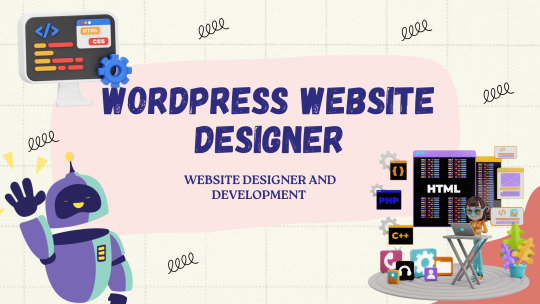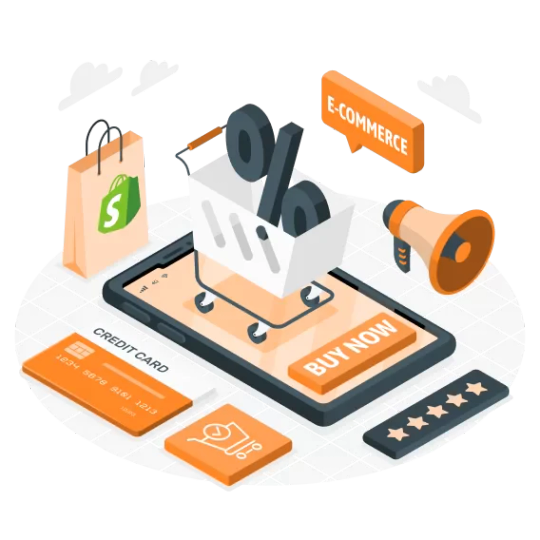#Shopify Store Speed Optimization Services
Explore tagged Tumblr posts
Text

CartCoders offers expert Shopify speed optimization services, helping your website perform faster and more efficiently. Our team identifies and fixes issues like large images, excess code, or slow-loading apps, improving your store's speed. We focus on technical aspects such as image compression, theme optimization, and efficient coding practices, ensuring a smoother browsing experience for customers while boosting your store's performance. Trust CartCoders for a quicker, more responsive Shopify site.
0 notes
Text

Top Shopify Speed Optimization Services in India | Adskylar
Boost performance with top Shopify speed optimization services in India. Expert in Shopify page speed optimization and Shopify store speed optimization for faster, smoother shopping experiences.
#shopify speed optimization services#shopify page speed optimization#shopify store speed optimization
0 notes
Text

Reach Top Shopify App Development Company
Being a reputed shopify app development company, we hold expertise to build custom shopify apps that match both client and end-user needs. The highly scalable nature of the Shopify app allows you to extend its features any time you want as per your requirements and concerns. Visit our website to consult the best Shopify app development company.
#shopify app development company#shopify app development services#shopify speed optimization#optimize shopify store speed
0 notes
Text

Shopify Speed Optimization Services | Improve Website Performance
Boost your online success! Our Shopify Speed Optimization Services enhance website performance, ensuring lightning-fast loading times. Elevate user experience and outshine the competition
0 notes
Text
What is a Website? A Complete Beginner’s Guide

In today’s digital age, having an online presence is not a luxury — it’s a necessity. Whether you're a business owner, content creator, or just someone curious about the web, understanding what a website is and how it functions is essential. In this guide, we’ll cover everything you need to know about websites, their components, types, benefits, and how to create one.
What is a Website?
A website is a collection of publicly accessible web pages that are linked together and share a single domain name. These pages are hosted on a web server and can include text, images, videos, forms, and other elements that users interact with online.
In simpler terms, a website is your virtual space on the internet — like your home or office in the digital world. It allows you to communicate, sell, educate, entertain, or showcase anything to a global audience.
Why is a Website Important Today?
In a world dominated by smartphones, search engines, and social media, a website acts as your central hub online. Here's why it’s important:
Visibility: A website helps you appear in search results when people look for your products, services, or information.
Credibility: A professional-looking site builds trust among your audience.
Accessibility: Your website is available 24/7, allowing customers to reach you anytime.
Marketing: It's the foundation for all your digital marketing efforts.
Sales: With e-commerce, your website can directly generate revenue.
Core Components of a Website
Every website has several key components that make it function properly:
1. Domain Name
This is your site’s address (e.g., www.digitalcreator.org.in). It’s what users type in their browser to visit your site.
2. Hosting Server
Web hosting stores your website’s data and serves it to users when requested.
3. Content Management System (CMS)
A CMS like WordPress, Joomla, or Shopify makes it easy to build and manage content on your website without coding.
4. Web Pages
These include the homepage, about us, contact, services, blog, etc., that make up your website.
5. Navigation
Menus and internal links guide visitors through your website.
Types of Websites
Different websites serve different purposes. Here are some common types:
1. Business Website
Used by companies to promote services, share information, and connect with clients.
2. E-commerce Website
Allows users to buy and sell products online. Examples include Amazon and Flipkart.
3. Portfolio Website
Ideal for creative professionals to showcase their work.
4. Blog or Personal Website
Used by individuals to share ideas, stories, or niche content regularly.
5. Educational Website
Used by schools, institutions, or educators to provide learning materials.
6. Non-profit or Government Website
Focused on delivering information and services to the public.
How to Create a Website (Step-by-Step)
Creating a website doesn’t require you to be a tech expert. Follow these steps:
Step 1: Choose a Domain Name
Pick a short, relevant, and memorable domain name. Make sure it reflects your brand or purpose.
Step 2: Get Web Hosting
Choose a reliable hosting provider like Bluehost, SiteGround, or Hostinger.
Step 3: Select a CMS or Website Builder
Use platforms like WordPress, Wix, or Shopify to start building your website.
Step 4: Design Your Website
Choose a theme or template. Customize colors, fonts, and layout to match your brand.
Step 5: Add Content
Create and publish pages like Home, About, Services, and Contact. Use quality visuals and optimized text.
Step 6: Optimize for SEO
Use keywords (like website) naturally, optimize images, and ensure fast load speed.
Step 7: Launch and Promote
Once satisfied, make your website live. Share it on social media and start your SEO or ad campaigns.
Best Practices for a Great Website
Responsive Design: Ensure your site works well on all devices.
Fast Loading Speed: Use compressed images and optimized code.
Clear Navigation: Make it easy for users to find what they need.
Secure (HTTPS): Use an SSL certificate to protect data.
Call-to-Action (CTA): Guide visitors toward actions like “Buy Now” or “Contact Us.”
Examples of Great Websites
A well-designed and fully functional example is www.digitalcreator.org.in. It demonstrates how a website can showcase services, build trust, and attract new clients efficiently.
LSI Keywords to Keep in Mind
While writing or optimizing your website, include these Latent Semantic Indexing (LSI) keywords to enhance search performance:
Web design
Online presence
Website development
Internet site
Web page
Digital platform
Domain and hosting
CMS (Content Management System)
Website builder
E-commerce site
Frequently Asked Questions (FAQs)
1. What is the purpose of a website?
A website helps individuals or businesses share information, sell products, provide services, or connect with others online.
2. How much does it cost to build a website?
Costs vary based on design, features, and hosting. Basic websites can cost as low as ₹3,000–₹10,000, while advanced ones may go up to ₹1 lakh or more.
3. Do I need coding skills to create a website?
No. Tools like WordPress or Wix allow you to build a full website without writing any code.
4. How long does it take to build a website?
A simple website can be built in 1–2 days. More complex sites may take a few weeks.
5. What makes a website successful?
A successful website is user-friendly, fast, mobile-optimized, secure, and offers valuable content with clear calls-to-action.
Conclusion
Understanding what a website is is the first step toward establishing your digital footprint. Whether you're planning to launch a personal blog, online store, or professional portfolio, your website will serve as the foundation of your online presence.
If you're ready to build or improve your website, visit www.digitalcreator.org.in — your one-stop destination for digital marketing and website development solutions.
2 notes
·
View notes
Text
How to Migrate a Store from Shopify to Magento?
Migration from Shopify to Magento is a huge leap for your business, offering it more flexibility, scalability, and advanced features. Though this might seem daunting, having a clear roadmap for making this transition will ease the process. The following is a step-by-step guide to help in successfully migrating:
1. Understand Why You’re Migrating
First of all, before one dives in, understand why Magento is a destination point. Yes, Shopify was perfect for simplicity and ease, but Magento means advanced personalization, better scalability, and robust features. If your current platform starts to limit growth, your Magento 2 Migration will be the cool thing to do.
2. Plan and Prepare Your Data
Start by auditing your Shopify store. After auditing is completed, the Shopify merchant may need to make a note of data to migrate, which would involve details related to a product, customers, orders, and the site's content. Clean up your data-remove all outdated and duplicate entries, to keep data from becoming a disaster later on. In that way, everything will go just smoothly when migrated, and the shop could be arranged more organizedly at Magento.
3. Set Up Your Magento Store
Install Magento on a decent hosting platform or take the help of a hosting service dedicated to Magento. After that, configure some basic settings such as tax rules, currencies, and store language. Choose a theme for Magento that will represent your brand identity and customize it for seamless user experience.
4. Export Data from Shopify
Shopify provides an export facility of data into CSV format. In your Shopify admin, go to the export section and download all the required files: products, orders, customer records, etc. Back up your Shopify store to ensure you will not lose any data while migrating.

5. Data Import via Migration Tools
Magento also allows for imports with some tools, which ease the migration of data. You can use extensions for such migrations, like Cart2Cart or LitExtension, which allow automated transfers. This is because the tools will map data fields between Shopify and Magento to reduce human-induced errors.
6. Test Your Magento Store
Perform a full test of your fresh Magento store before going to production. Verify that every piece of data has migrated correctly and all product descriptions, image captions, and customer details are correct. Ensure your payment gateways, shipping methods, and checkouts work flawlessly.
7. Optimize for Performance
Magento offers advanced caching, scalability, and mobile-friendly features. Set these up to enhance the speed of your site and the users' experience. Install SEO extensions to maintain or improve your search rankings post-migration.
8. Launch Your Store
When everything is tested and optimized, switch your domain to Magento. Keep your customers informed about the migration process, emphasizing the benefits of the new platform, whether it be a better shopping experience or exclusive features.
9. Monitor and Improve
After going live, monitor your store's performance and user feedback. Address any issues quickly and continue optimizing your Magento store to align with your business goals.
Migration to Magento can be rather labor-intensive and take a long time, but the payoff in terms of customization, performance, and scalability is there. If you plan properly, this transition will lay a foundation for your business's success in the long run.
For More information, please visit: https://mageleven.com/magento-migration-services
4 notes
·
View notes
Text
The Ultimate Guide to Growing Your Shopify Store in 2025
Running a Shopify store in 2025 is more competitive than ever, but with the right strategies, you can stand out and build a thriving eCommerce business. Whether you're just starting or looking to scale, here’s a complete guide to optimizing your Shopify store for success.
1. Perfect Your Store’s Design & User Experience
Your store’s design plays a huge role in conversions. Here’s how to make it visually appealing and user-friendly:
✔ Choose a Clean, Mobile-Optimized Theme – 70%+ of online shopping happens on mobile devices, so a responsive theme is a must.
✔ Simplify Navigation – Make it easy for visitors to find what they need with clear menus and search functionality.
✔ Use High-Quality Images & Videos – Professional product photography builds trust and increases conversions.
✔ Speed Up Your Site – Slow-loading pages lead to lost sales. Use compressed images and Shopify speed optimization apps.
2. SEO: Get Found on Google
Search Engine Optimization (SEO) helps your store rank higher on Google, bringing in free organic traffic.
✔ Keyword Optimization – Use relevant keywords in product titles, descriptions, and blog posts.
✔ Meta Descriptions & Alt Text – Write compelling meta descriptions and add alt text to images for better indexing.
✔ Content Marketing – Start a blog to share product guides, tips, and industry insights.
3. Use Email Marketing & Automation
Email marketing is still one of the most effective ways to drive sales. Here’s how to make it work for your Shopify store:
✔ Set Up Abandoned Cart Emails – Recover lost sales with automated reminders.
✔ Welcome Sequences – Engage new subscribers with exclusive discounts and brand stories.
✔ Segmentation & Personalization – Send tailored product recommendations based on customer preferences.
4. Leverage Social Media & Paid Ads
Social media can drive massive traffic and sales when used correctly.
✔ Instagram & TikTok Shopping – Link your Shopify store directly to these platforms for seamless shopping.
✔ Facebook & Google Ads – Run retargeting ads to bring back visitors who didn’t purchase.
✔ Influencer Marketing – Partner with influencers in your niche for increased credibility and reach.
5. Optimize for Conversions
Driving traffic is great, but converting visitors into customers is the real game-changer.
✔ Offer Discounts & Free Shipping – Create urgency with time-limited offers.
✔ Use Trust Badges & Reviews – Social proof increases customer confidence.
✔ Simplify Checkout – A one-page checkout process reduces cart abandonment.
6. Upselling & Cross-Selling Strategies
Maximize each sale by offering related products or premium versions.
✔ Bundle Deals – Encourage customers to buy more with discounted product bundles.
✔ Post-Purchase Upsells – Suggest add-ons after checkout for an easy extra sale.
7. Leverage Shopify Apps
Shopify’s app ecosystem allows you to add powerful features to your store. Some must-have apps include:
✔ Klaviyo – For advanced email marketing automation.
✔ ReConvert – For upselling and post-purchase funnels.
✔ PageFly – To design custom landing pages that convert.
Final Thoughts
Success in Shopify isn’t just about launching a store—it’s about continuously optimizing, learning, and evolving. By focusing on design, SEO, marketing, and conversions, you’ll be on your way to building a profitable online store.
Want expert help setting up or scaling your Shopify store? As a Shopify expert, I offer professional store design, SEO, and marketing services. Feel free to reach out and let’s take your store to the next level!
4 notes
·
View notes
Text
Expert E-Commerce Website Development In USA
In today's digital landscape, establishing a robust online presence is crucial for business success. Kushel Digi offers custom eCommerce development services designed to drive growth and enhance customer experience. By leveraging the latest technologies, they ensure the creation of seamless and scalable online stores tailored to meet the unique goals of modern businesses.
Comprehensive E-Commerce Services
Kushel Digi provides a wide array of services to cater to diverse business needs:
Custom E-Commerce Development: They deliver tailored solutions, building scalable online stores with strong platform architecture and personalized features.
Store Design & Development: Focusing on excellent website design, they create user-centric layouts coupled with high-performance development, offering customizable designs that align with your brand identity.
Platform Migration: Simplifying the transition process, they offer data migration support and smooth process integration, ensuring minimal downtime during platform changes.
Third-Party Integration: Enhancing efficiency through simplified API integrations, they connect CRM & ERP systems and implement secure payment gateway solutions.
Mobile E-Commerce Solutions: Recognizing the importance of mobile commerce, they develop mobile-optimized stores with responsive designs, ensuring cross-platform compatibility for an excellent shopping experience.
E-Commerce SEO & Optimization: Implementing on-page SEO best practices, they focus on site speed improvements and enhanced search visibility to increase conversion rates.
Proven Success Stories
Kushel Digi's expertise is reflected in their successful projects:
Black Rhino Concealment: Achieved a 35% increase in sales, a 22% improvement in average page speed, and a 40% boost in revenue.
KICK-EEZ: Experienced a 35% rise in sales, a 22% enhancement in average page speed, and a 40% increase in revenue.
Sights & Scopes: Saw an 80% growth in sales, a 120% surge in conversion rate, and a 140% uplift in order value.
Slides 365: Noted an 80% increase in sales, a 120% improvement in conversion rate, and a 140% rise in order value.
Leveraging Leading E-Commerce Technologies
Kushel Digi utilizes top eCommerce platforms to build robust online stores:
Shopify: An all-in-one platform simplifying online business operations and offering seamless shopping experiences.
Magento: Known for its flexibility, it allows businesses to unlock extensive customization features, ideal for medium to large enterprises.
BigCommerce: Offers scalable solutions supporting multi-channel selling, secure transactions, and customizable designs, making it suitable for reaching a global audience.
WooCommerce: Transforms WordPress sites into fully functional online stores with user-friendly interfaces.
Commitment to Client Success
Kushel Digi is dedicated to providing custom eCommerce development services that not only drive growth but also enhance the customer experience. By utilizing the latest technologies, they ensure the creation of seamless and scalable online stores tailored to meet the unique goals of modern businesses.
Embarking on your eCommerce journey with Kushel Digi means partnering with a team committed to your business's growth and success. Their comprehensive services and proven track record make them a trusted choice for businesses aiming to establish or enhance their online presence.
Visit more :- https://www.kusheldigi.us/
#Custom eCommerce Development#Store Design & Development#Platform Migration#Mobile eCommerce Solutions
2 notes
·
View notes
Text
Top 10 Shopify Marketing Strategies to Skyrocket Your Sales in 2025"
Shopify is a effective e-trade platform that empowers corporations of all sizes to construct on line shops. However, simply having a shop isn't sufficient; effective advertising is important to attract clients and power sales. This manual will discover key Shopify advertising techniques and strategies that will help you prevail.

"Effective Shopify store promotion methods in 2025"
1. Content Marketing
Blog: Create valuable content that addresses your audience's pain factors, answers their questions, and presents beneficial records.
Examples: Product courses, industry news, behind-the-scenes glimpses, consumer testimonials.
Social Media: Engage together with your target audience on platforms like Instagram, Facebook, Twitter, and TikTok. Share visually attractive content material, run contests and giveaways, and respond right away to feedback and messages.
Video Marketing: Create engaging films like product demos, tutorials, and consumer testimonies. Platforms like YouTube and TikTok are exquisite for video advertising and marketing.
2. Search Engine Optimization (search engine marketing)
On-Page SEO: Optimize your product pages, weblog posts, and website copy with applicable keywords. Use clear and concise product descriptions, exceptional images, and rapid loading instances.
Off-Page search engine marketing: Build splendid one-way links from different authentic websites. Engage in guest blogging, take part in on-line groups, and build relationships with different groups.
Technical SEO: Ensure your internet site is cellular-pleasant, has a stable connection (HTTPS), and is simple for search engines to crawl and index.
Three. Email Marketing
Build an Email List: Offer incentives like discounts or one of a kind content to inspire site visitors to enroll in your e mail list.
Segment Your Audience: Tailor your e-mail campaigns to particular customer segments based on their purchase records, surfing behavior, and demographics.
Automate Your Emails: Use email advertising automation equipment to ship welcome emails, abandoned cart reminders, and post-buy comply with-up messages.
4. Paid Advertising
Google Ads: Run focused ads on Google Search and Google Display Network to attain clients actively searching for products like yours.
Social Media Ads: Utilize centered ads on structures like Facebook, Instagram, and Pinterest to reach specific demographics and hobbies.
Influencer Marketing: Partner with applicable influencers to promote your merchandise to their fans.
Five. Social Proof
Customer Reviews: Display patron opinions and testimonials prominently in your internet site and product pages.
Social Media Mentions: Encourage social media sharing by means of strolling contests and providing incentives.
User-Generated Content: Feature consumer-generated content like snap shots and videos of clients the usage of your merchandise.
6. Sales and Promotions
Discounts and Coupons: Offer discounts, coupons, and special promotions to draw new clients and incentivize repeat purchases.
Flash Sales: Create a sense of urgency via imparting confined-time discounts on choose merchandise.
Loyalty Programs: Reward repeat customers with unique discounts, early get right of entry to to income, and personalized offers.
7. Website Optimization
User Experience (UX): Ensure your internet site is straightforward to navigate, visually attractive, and cell-friendly.
Page Speed: Optimize your website's loading speed to enhance person experience and search engine ratings.
Clear Call-to-Actions (CTAs): Use strong CTAs like "Buy Now," "Add to Cart," and "Learn More" to manual site visitors towards conversions.
Eight. Customer Service
Provide Excellent Support: Offer activate and beneficial customer support via channels like live chat, e-mail, and phone.
Build Relationships: Go the extra mile to construct sturdy relationships along with your customers.
Address Feedback: Actively solicit and respond to client comments to improve your products and services.
Nine. Analytics and Tracking
Track Key Metrics: Monitor key metrics like internet site site visitors, conversion charges, client acquisition cost, and client lifetime fee.
Analyze Data: Use facts analytics tools to pick out areas for development and optimize your advertising campaigns.
A/B Testing: Experiment with exclusive website factors and advertising and marketing campaigns to peer what plays best.
10. Shopify Apps
Boost Sales: Utilize Shopify apps to beautify your advertising efforts, which include apps for e-mail advertising, social media advertising and marketing, and sales automation.
Improve Customer Experience: Implement apps that enhance customer experience, such as stay chat, product pointers, and transport monitoring.
Increase Efficiency: Streamline your commercial enterprise operations with apps for inventory management, order fulfillment, and accounting.
Key Considerations:
Target Audience: Understand your target market's wishes, choices, and on line conduct.
Budget: Determine your advertising budget and allocate finances efficiently throughout exceptional channels.
Consistency: Maintain regular branding and messaging across all advertising channels.
Innovation: Stay updated with the modern day advertising tendencies and technologies.
Shopify Marketing Examples:
Allbirds: Known for its sustainable footwear, Allbirds efficaciously leverages social media marketing, person-generated content, and influencer collaborations to build a sturdy emblem following.
Glossier: Glossier has built a devoted community thru social media engagement, actual logo storytelling, and a focus on purchaser experience.
Gymshark: Gymshark correctly makes use of influencer marketing, health demanding situations, and a strong social media presence to engage its target audience of fitness enthusiasts.
By imposing these techniques and strategies, you may efficiently marketplace your Shopify shop, appeal to clients, and force sales growth. Remember to constantly analyze your effects, adapt your technique based on statistics, and live focused on supplying value on your clients.
Disclaimer: This records is for general understanding and informational functions most effective and does now not constitute monetary, funding, or other professional advice.
I desire this comprehensive guide provides precious insights into Shopify advertising. Feel unfastened to invite if you have any further questions.
2 notes
·
View notes
Text
Elevate Your Business with Expert E-commerce Website Development Services
E-commerce is no longer the future—it’s the present. With online shopping becoming second nature for millions worldwide, businesses must adapt to stay competitive. But creating a thriving e-commerce business takes more than uploading product images and adding a payment option. It demands a carefully crafted platform tailored to customer needs, brand identity, and technological advancements.
This is where an experienced e-commerce website development company like KSoft Technologies can help. We don’t just build websites; we craft experiences that turn casual browsers into loyal customers. In this blog, we’ll explore the importance of e-commerce websites, the role of a development company, and how partnering with KSoft Technologies can help your business thrive.
Why Every Business Needs an E-commerce Website
Let’s start with the basics. Why does your business need an e-commerce platform in the first place?
1. Reach a Global Audience
Your physical store may have geographical limitations, but an online store? The world is your marketplace. With a robust e-commerce website, you can reach customers across continents, breaking barriers like time zones and borders.
2. Operate 24/7
Unlike a traditional brick-and-mortar store, an e-commerce website doesn’t have operating hours. It’s open 24/7, allowing customers to shop anytime, from anywhere.
3. Cost-Effective Expansion
Expanding a physical store involves hefty expenses—rent, staff, utilities. An online store is a fraction of the cost and allows you to scale up without logistical hurdles.
4. Gain Valuable Insights
E-commerce websites are a treasure trove of data. From customer demographics to purchasing trends, analytics tools provide actionable insights to refine your marketing and sales strategies.
What Makes a Great E-commerce Website?
Creating a website is easy; creating an exceptional e-commerce website is not. Here are the must-have features that separate a mediocre website from a great one:
1. Intuitive Navigation
Shoppers shouldn’t need a map to find what they’re looking for. Clear menus, logical product categories, and search filters are non-negotiable.
2. High Performance and Speed
Studies show that a one-second delay in page load time can lead to a 7% drop in conversions. Speed matters, and we optimize every element of your site for peak performance.
3. Responsive E-commerce Website Design
More than half of online shopping happens on mobile devices. Our responsive e-commerce website design ensures your site looks and works beautifully across all devices.
4. Secure Payment Gateway Integration
From credit cards to digital wallets, customers expect secure and versatile payment options. We provide secure payment gateway integration for peace of mind.
5. Customizable Shopping Carts
The shopping cart is where conversions happen. Our customizable carts simplify adding items, applying coupons, and calculating taxes and shipping.
6. SEO-Friendly E-commerce Websites
Your website’s visibility on search engines directly impacts traffic and sales. We build SEO-friendly e-commerce websites with optimized code, meta tags, and fast loading speeds.
Why Work with KSoft Technologies?
Partnering with KSoft Technologies means working with a team that’s as passionate about your success as you are. Here’s what sets us apart:
1. Expertise Across Platforms
Whether you’re looking for Shopify development experts, WooCommerce website development, or Magento e-commerce solutions, we’ve got you covered. Our team has extensive experience with leading platforms.
2. Focus on Customization
Every business has unique needs, and we believe your website should reflect that. Our custom e-commerce solutions are tailored to your specific goals and industry requirements.
3. Scalability and Growth
Your e-commerce website should grow with your business. We build scalable platforms that adapt to increased traffic, product lines, and customer demands.
4. AI-Powered Personalization
We leverage AI to provide personalized shopping experiences, from tailored product recommendations to predictive search functionality.
5. Post-Launch Support
Our relationship doesn’t end at launch. We offer ongoing support and updates to keep your website running smoothly and securely.
Benefits of E-commerce Website Development
If you’re still wondering whether investing in an e-commerce website is worth it, let’s break down the benefits:
1. Increase Sales
A well-designed e-commerce platform makes it easier for customers to browse, buy, and return for more. From intuitive navigation to smooth checkout processes, every feature is geared toward boosting sales.
2. Lower Costs
Compared to traditional retail, an online store saves you money on overhead costs like rent, utilities, and staffing.
3. Build Brand Loyalty
By offering a seamless shopping experience, loyalty programs, and personalized recommendations, your website becomes a trusted destination for customers.
4. Expand Market Reach
With digital tools like social media integration and multi-vendor e-commerce platforms, you can reach more customers and explore new markets.
5. Gain Customer Insights
Analytics tools integrated into your website help you track customer behavior, identify trends, and make data-driven decisions.
Trends Shaping the Future of E-commerce
The e-commerce landscape is constantly evolving, and staying ahead means adopting emerging trends. Here’s what’s shaping the future:
1. Voice Commerce
With devices like Alexa and Google Home becoming household staples, voice search is transforming the way people shop. Optimizing your website for voice commerce ensures you stay relevant.
2. Augmented Reality (AR)
AR is revolutionizing online shopping by letting customers “try” products before they buy. From virtual fitting rooms to 3D product views, AR enhances the online shopping experience.
3. Blockchain Technology
Secure, transparent, and efficient—blockchain is changing the way payments and supply chains are managed in e-commerce.
4. Headless Commerce
This approach decouples the front-end and back-end of your website, giving you greater flexibility and faster load times.
5. Subscription-Based Models
From beauty boxes to meal kits, subscription models are gaining popularity. Adding a subscription option can create consistent revenue streams for your business.
Real-Life Success Stories: How KSoft Technologies Made a Difference
Case Study 1: A Fashion Retailer’s Makeover
A struggling fashion brand approached us with an outdated e-commerce platform that was driving customers away. We revamped their website with a responsive e-commerce design, faster loading times, and secure payment integration. The result? A 200% increase in sales within three months.
Case Study 2: Multi-Vendor Marketplace for Handmade Goods
An artisan collective needed a multi-vendor e-commerce platform to support their growing community of sellers. Our solution included customizable vendor dashboards, real-time inventory management, and integrated analytics. The platform became a go-to destination for handmade goods.
Case Study 3: Expanding a Local Grocery Store Online
A family-owned grocery store wanted to expand online but didn’t know where to start. We built an SEO-friendly website with advanced search filters, subscription options, and mobile optimization. Their monthly sales doubled within the first quarter.
2 notes
·
View notes
Text
The Best Free WordPress Plugins You Should Use

If you're running a WordPress website, plugins are essential for adding functionality, improving performance, and optimizing the user experience. At Island Wizards, a company dedicated to providing WordPress headless and Shopify services, we understand the importance of selecting the right plugins for your website. To help you get started, we've compiled a list of the best free WordPress plugins that you should consider for your site.
1. Yoast SEO
Yoast SEO is one of the most popular and comprehensive SEO plugins available. It helps you optimize your content for search engines by providing keyword analysis, readability scores, and detailed SEO suggestions.
Key Features:
Real-time page analysis
XML sitemap generation
On-page optimization for readability and keywords
This plugin ensures that your content is SEO-friendly, which can boost your site's visibility in search engine results pages (SERPs).
2. WPForms
Every website needs a reliable contact form, and WPForms is one of the easiest form builders out there. With its drag-and-drop functionality, you can create beautiful forms in minutes, even if you're not tech-savvy.
Key Features:
Drag-and-drop builder
Mobile responsive
Spam protection
WPForms makes it simple for your visitors to get in touch with you, making it a must-have for businesses like Island Wizards.
3. Elementor
For those looking to design stunning web pages without coding, Elementor is the go-to plugin. This free page builder offers a user-friendly interface that allows you to create custom layouts and designs.
Key Features:
Drag-and-drop editor
100+ templates
Mobile-friendly designs
At Island Wizards, we recommend Elementor for clients who want full control over their website's appearance without relying on custom coding.
4. WooCommerce
If you're running an online store, WooCommerce is the ultimate plugin for e-commerce. It powers more than 30% of all online stores, and it's fully customizable, allowing you to sell anything from physical products to digital downloads.
Key Features:
Built-in payment processing
Inventory management
Customizable product pages
As experts in WordPress and Shopify, we at Island Wizards often integrate WooCommerce for clients looking to build a robust online store.
5. UpdraftPlus
Backing up your website is crucial, and UpdraftPlus simplifies this process. This backup plugin allows you to store your backups in the cloud or download them for safekeeping.
Key Features:
Scheduled backups
Cloud storage integration
Easy restoration
At Island Wizards, we always advise our clients to have a backup strategy, and UpdraftPlus is the perfect solution for that.
6. Smush
Website speed is critical for user experience and SEO, and Smush helps by compressing your images without sacrificing quality. This image optimization plugin reduces file sizes, making your site faster and more efficient.
Key Features:
Lossless image compression
Bulk image optimization
Lazy loading
Faster websites tend to rank higher in search engines, and at Island Wizards, we prioritize performance for all our clients.
7. Wordfence Security
Security is a top priority for any website, and Wordfence provides a comprehensive security plugin to protect your site from malicious attacks.
Key Features:
Firewall and malware scanner
Login security
Real-time threat defense feed
With security being a major concern, we at Island Wizards strongly recommend Wordfence to all our WordPress clients.
Conclusion
Whether you're just starting out with your WordPress site or looking to enhance its functionality, these free plugins are essential tools for success. At Island Wizards, we specialize in WordPress development and can help you integrate these plugins into your site seamlessly. Choosing the right plugins can significantly improve your site's performance, security, and overall user experience, ensuring your website operates at its full potential. Explore more about our service… https://islandwizards.com/blogs/when-you-should-consider-moving-your-store-to-shopify/ https://islandwizards.com/blogs/understanding-the-importance-of-ui-ux-in-website-design/
#shopify#headless wordpress development services#island wizards#wordpress#island wizards uk'#shopify partner program#wizards island#seo#white label agency
2 notes
·
View notes
Text
Elevate Your E-commerce Game: Comprehensive Shopify CRO Services Guide
In the competitive world of e-commerce, standing out from the crowd and converting visitors into loyal customers is essential for success. Shopify, a leading e-commerce platform, offers robust tools to help store owners achieve this goal. However, understanding and leveraging these tools effectively requires a strategic approach to Conversion Rate Optimization (CRO). This guide will explore comprehensive Shopify CRO services that can elevate your e-commerce game and drive growth in 2024.
The Importance of Conversion Rate Optimization
Conversion Rate Optimization (CRO) is the practice of increasing the percentage of website visitors who complete a desired action, such as making a purchase or subscribing to a newsletter. For e-commerce businesses, optimizing conversion rates is crucial because it directly impacts revenue without the need to increase traffic. By focusing on improving the user experience and addressing potential barriers to conversion, businesses can significantly enhance their profitability.
Essential Shopify CRO Services for 2024
Personalized Customer Experiences : In 2024, personalization remains a key driver of conversions. Utilizing customer data to deliver tailored experiences, from personalized product recommendations to customized email campaigns, can make a significant difference. Shopify's advanced tools and integrations enable store owners to create unique shopping experiences that resonate with individual customers.
Mobile-First Optimization : With the majority of online shopping now happening on mobile devices, optimizing for mobile is no longer optional. Ensuring your Shopify store has a responsive design, fast loading times, and intuitive navigation is critical. Use tools like Google’s Mobile-Friendly Test to evaluate and enhance your store’s mobile performance.
Comprehensive A/B Testing : A/B testing, or split testing, involves comparing two versions of a webpage to identify which one performs better. This technique helps fine-tune elements such as headlines, images, and call-to-action buttons. Shopify integrates with various A/B testing tools, allowing for seamless experimentation and data-driven decisions.
Streamlined Checkout Process Reducing cart abandonment rates is a major focus for CRO. Simplifying the checkout process by minimizing steps, enabling guest checkout, and using auto-filled forms can significantly enhance the user experience. Shopify’s one-click checkout feature can also help speed up the purchasing process, leading to higher conversion rates.
High-Quality Visuals and Descriptive Content High-resolution images and detailed product descriptions are vital in convincing potential customers to make a purchase. Invest in professional photography and engaging copywriting to showcase your products effectively. Shopify’s built-in photo editing tools can help enhance the visual appeal of your store.
Leveraging Social Proof Social proof, such as customer reviews, testimonials, and user-generated content, can build trust and influence purchasing decisions. Shopify supports various apps, like Yotpo, that facilitate the collection and display of social proof on your store.
Effective Retargeting Campaigns Retargeting campaigns are essential for re-engaging visitors who have left your site without making a purchase. Shopify’s integration with advertising platforms like Facebook and Google Ads allows you to create targeted ads that remind potential customers of your products, encouraging them to return and complete their purchase.
Optimizing Site Speed and Performance A quick-loading website is essential for keeping visitors engaged and minimizing bounce rates. Regularly monitor your site’s speed using tools like Google PageSpeed Insights and optimize as needed. Shopify’s reliable infrastructure supports efficient traffic handling, but additional optimizations can further enhance performance.
Why OyeCommerz is Your Ideal CRO Partner ?
Choosing the right partner for your Shopify store’s CRO needs is essential for achieving optimal results. OyeCommerz is a premier e-commerce agency specializing in comprehensive CRO services, including migration, integration, and development. Here’s why OyeCommerz is the perfect choice:
Expert Migration Services : Migrating to Shopify from another platform can be a complex process. OyeCommerz simplifies this transition with expert migration services, ensuring that all your data, such as products, customers, and orders, is accurately and securely transferred. Their meticulous approach minimizes downtime and maintains your store’s SEO integrity.
Seamless Integration Services : Integrating various tools and systems with your Shopify store can enhance its functionality and streamline operations. OyeCommerz offers seamless integration services, connecting your store with essential systems like Shopify Customer Relationship Management Integration Services, Shopify Enterprise Resource Planning Integration Services, payment gateways, and more, ensuring smooth and efficient business processes.
Custom Development Services : Every e-commerce business has unique needs that require customized solutions. OyeCommerz provides bespoke development services to tailor your Shopify store to your specific requirements. Whether it’s custom themes, specialized apps, or unique functionalities, their expert development team ensures your store stands out and performs optimally.
Maximizing Impact with Combined Services : By combining migration, integration, and custom development services, OyeCommerz delivers a holistic approach to optimizing your Shopify store. A seamless migration ensures data integrity and continuity. Integrating essential tools enhances operational efficiency, while custom development addresses specific needs, creating a unique and effective online shopping experience.
Conclusion
In conclusion, elevating your e-commerce game in 2024 requires a strategic approach to Shopify CRO. By focusing on personalized experiences, mobile optimization, A/B testing, streamlined checkout processes, high-quality visuals, social proof, retargeting, and site performance, you can significantly improve your conversion rates. Partnering with experts like OyeCommerz can further enhance your efforts, providing comprehensive services that ensure your Shopify store not only attracts visitors but converts them into loyal customers.
#conversion rate optimization#cro#crm#erp#ecommerce#shopify#integration#migration#online store#oyecommerz#development#Shopify Customer Relationship Management Integration Services#Shopify Enterprise Resource Planning Integration Services
2 notes
·
View notes
Text
I will work on wordpress website design and development
Thanks for stopping at my online shop
I serve my expertise your business effective worldwide Internet exposure at low prices. professional and modern WordPress Website Designer. I complete all my project with absolute devotion and perfection. I customize Responsive WordPress Website regularly and can help customize yours, so you can get your site up and running.
So here are the services you will get from me:
After Sales Service
Speed Optimization
Professional themes
E-Commerce Setup
Secure Admin Panel
Forms & package creator
Shopify Stores
Backup Files
Secure content
Repair, redesign and fixing of existing sites
Note : If you have any questions watch contact me now.
ORDER NOW : https://www.fiverr.com/s/o3b5lb

#fiverr#fiver gig#freelancing#upwork#gig work#wordpress#wordpress website#wordpress web design#wordpress development#wordpress themes#wordpress plugins#website#webdesign#webdevelopment#web developing company#web developers
3 notes
·
View notes
Text
How to Turn Your Online Business Dreams into Reality


Introduction: The Digital Frontier of Entrepreneurship Selecting a Niche and Business Model: The Foundation of Success Building Your Online Platform and Brand: Your Digital Headquarters Creating High-Demand Products and Services: Delivering Value to Your Audience Implementing Effective Marketing Strategies: Attracting Targeted Traffic Diversifying Revenue Streams for Maximum Profits: Building Financial Stability Optimizing for Maximum Profitability Long-Term: Building a Sustainable Business Conclusion: Turning Dreams into Reality True successful story
Introduction: The Digital Frontier of Entrepreneurship
In today's digital age, the rise of the internet and technology has revolutionized the way we do business. It has opened a world of opportunities for entrepreneurs to start and run their own businesses online. Online businesses offer flexibility, scalability, and the potential for global reach. This comprehensive guide will provide you with a step-by-step framework for building a profitable online business from the ground up. Whether you want to start a side business or build a full-time online empire, follow this ultimate guide to turn your idea into a thriving, sustainable online business. With focus, grit, and commitment to continuous improvement, you can build the profitable online business of your dreams.
Selecting a Niche and Business Model: The Foundation of Success
The foundation of every successful online business is choosing a profitable, in-demand niche and a business model tailored to your goals. Select a niche you're passionate about; this will make creating content a breeze. Conduct thorough keyword research to assess search volume and demand. Join relevant online communities to connect with your audience and understand their needs. Evaluate direct competitors in the niche and aim for less saturated niches or unique angles. Consider affiliate marketing potential, as some niches offer higher commissions. Assess opportunities to create multiple products and monetize in diverse ways. Examples of popular online business niches include health, fitness, personal finance, pet care, tech, travel, content marketing, home design, spirituality, language learning, and more. Choose a business model that complements your niche and provides multiple income stream opportunities. Many successful online businesses incorporate 3-4 monetization models. Some of the best online business models to consider include: 1. Blogging: Make money with display ads, affiliates, and branded products. 2. Online Courses: Sell your knowledge and expertise as courses. 3. Dropshipping: Curate and sell products without inventory. 4. Affiliate Marketing: Earn commissions promoting other companies' products. 5. Information Products: Sell online books, templates, checklists, and more. 6. Virtual Services: Provide consulting, freelancing, coaching, or other services. 7. Subscription Membership Site: Offer exclusive content or tools for a monthly fee. 8. E-commerce Store: Sell physical products, merchandising, and more. Your choice should complement your niche and offer multiple income streams. Many successful online businesses incorporate 3-4 monetization models.
Building Your Online Platform and Brand: Your Digital Headquarters
Your website or blog will serve as the headquarters for your online business. Invest time upfront in creating an optimized, professional-looking platform. Purchase a domain name that matches your brand, ideally a .com if available. Select reliable web hosting with optimal speed and uptime. Install WordPress or ecommerce platforms like Shopify or WooCommerce. Design an on-brand, mobile-responsive theme that conveys your style. Include essential pages like Home, About, Contact, Services, Blog, and Shop. Set up email marketing and analytics to capture leads and track traffic data. Create visually branded assets such as logos, color palettes, fonts, and graphics. Ensure a cohesive user experience across all touchpoints. If you lack web development skills, consider hiring a freelance designer to bring your vision to life. Continually optimize your website for higher traffic, leads, and sales over time. This includes technical enhancements, user experience improvements, and page speed optimizations.
Creating High-Demand Products and Services: Delivering Value to Your Audience
The key to running a profitable online business is consistently creating products and services that deliver extreme value to your audience. Popular digital products you can create include online courses, eBooks, guides, checklists, software, premium memberships, virtual events, video tutorials, templates, and more. When brainstorming products, look for opportunities to simplify lives, save time, educate, entertain, or improve outcomes for your target customers. Leverage your expertise and tap into the skills of others to create premium offerings. High-value services like consulting, freelancing, coaching, and more can also be extremely lucrative. Promote your services through your website and social platforms. Structure your offerings to passively earn income over time, such as online courses that continually generate sales vs. 1-on-1 services that require ongoing effort. Deliver an excellent user experience across your products and relentlessly optimize based on feedback to foster raving fans who refer others.

Implementing Effective Marketing Strategies: Attracting Targeted Traffic
Once your online platform and offerings are ready, it's time to start attracting targeted traffic using proven marketing tactics. A diverse marketing mix is key. Some of the top strategies include: 1. Content Marketing: Create engaging blog posts, videos, and visual content. 2. SEO: Optimize your website for search engines through on-page optimization and link-building. 3. PPC Ads: Utilize platforms like Google, Facebook, Instagram, and YouTube for pay-per-click advertising. 4. Email Marketing: Build your email list with lead magnets, newsletters, and automation. 5. Social Media Marketing: Employ organic and paid tactics to engage your audience. 6. Affiliate Marketing: Recruit others to promote your products and earn commissions. 7. Influencer Partnerships: Collaborate with relevant influencers in your niche. 8. Live Events: Host local meetups or virtual events to connect with your audience. 9. Podcast Guest Appearances: Grow your authority and reach new audiences. 10. Retargeting Ads: Remarket to previous site visitors across the web. Start by focusing on 1-3 core channels, then expand your efforts over time. Pay-per-click and social ads can help quickly scale an audience, while SEO and content creation tend to be most cost-effective in the long-term. Leverage tools like Google Analytics, Facebook Business Suite, and landing page builders to optimize results across all campaigns. Don't hesitate to enlist help from digital marketing agencies and specialists.
Diversifying Revenue Streams for Maximum Profits: Building Financial Stability
Generating multiple streams of revenue is key for building a highly profitable online business. Diversification reduces risk and provides stability as each income channel goes through ups and downs. Here are some of the most lucrative online business revenue models: 1. Product/Service Sales: Your core monetization stream. Ensure competitive yet profitable pricing. 2. Advertising: Display ads, sponsorships, native advertising, etc. Set up Google Ad Manager. 3. Affiliate Marketing: Promote other company's products for commissions. Join affiliate networks. 4. Memberships/Subscriptions: Offer exclusive benefits, content, or tools for a monthly fee. 5. Events: Sell tickets for online or in-person events and training programs. 6. Dropshipping: Curate and sell products without holding inventory. 7. Physical Merchandise: Sell branded products with print-on-demand services. 8. Consulting/Freelancing: Sell your skills and expertise through 1-on-1 services. 9. Tip Jars/Donations: Allow fans to tip or donate to show support. Aim to generate income from both active efforts like service packages and passive streams like online courses that earn as you sleep. Automate processes wherever possible to scale income without increasing workload proportionally. Reinvest profits back into growing your business and diversifying income channels to create an unstoppable snowball effect over time.



Optimizing for Maximum Profitability Long-Term: Building a Sustainable Business
Launching a profitable online business is an important first step. However, creating systems and processes that enable high profitability long-term is vital for sustaining growth. Here are some best practices for optimizing operations and profitability: - Obsessively track KPIs and metrics for all marketing channels and funnels. Analyze data to optimize underperforming areas. - Create excellent customer support systems. Provide prompt, personalized support to increase satisfaction and referrals. - Automate repetitive tasks wherever possible with tools like Zapier. Automate lead collection, customer onboarding, analytics, inventory management, etc. - Systematize your product creation process to quickly test and validate new product ideas, then scale those that resonate. - Document your systems and processes so future hires can replicate them. This includes SOPs for customer service, product fulfillment, etc. - Build a skilled team over time by hiring virtual assistants, freelancers, agencies, and eventually full-time employees. Focus on higher-level strategy. - Maintain work-life balance as a long-term entrepreneur. Make time for adequate rest, leisure, and self-care to avoid burnout. By staying agile, embracing innovation, and relentlessly providing value to your audience, you can build an online business that delivers meaningful income for decades to come.



Conclusion: Turning Dreams into Reality
Starting and running a profitable online business takes consistent effort and persistence. However, by zeroing in on a niche, selecting the right model, crafting high-value offerings, implementing diverse marketing strategies, diversifying your revenue streams, and optimizing for maximum efficiency, you can build an online business that provides freedom and fulfillment for years to come. Remember to stay obsessively focused on understanding and serving your target audience. Combine your passion with grit, resilience, and creativity. With the right mindset and business foundations in place, you have immense potential to build a thriving online business that stands out and makes a lasting impact. The time to stop dreaming and start taking action is now. Follow this comprehensive guide to turn your online business idea into reality, step-by-step. You can build an online empire that allows you to live life on your terms. The possibilities are truly endless if you commit to continuous learning and improvement. Let this guide spark the fire within and set you on the path to online business success. Start pursuing your online entrepreneur dream today.


True successful story
To illustrate the principles and strategies discussed in this comprehensive guide, let's delve into the inspiring true story of Pat Flynn and his online business, Smart Passive Income. Smart Passive Income - About Pat Flynn Background: Pat Flynn was once an aspiring architect who unexpectedly found himself laid off during the economic downturn in 2008. Faced with uncertainty, he turned to the online world to seek alternative income sources. His journey began with a blog, which he aptly named Smart Passive Income (SPI). Selecting a Niche and Business Model: Pat recognized that there was a significant demand for information about creating online businesses and generating passive income. He was passionate about sharing his experiences, both successes and failures, and helping others navigate the world of online entrepreneurship. Pat's chosen niche was personal finance, but his business model extended beyond blogging. Building Your Online Platform and Brand: Pat invested in creating a professional-looking platform for SPI. He purchased a domain name, set up reliable web hosting, and designed an appealing website. His commitment to providing value was evident through the content he produced on his blog, podcast, and YouTube channel. His brand, Smart Passive Income, became synonymous with transparency, authenticity, and actionable advice. Creating High-Demand Products and Services: One of Pat's significant successes came from his creation of online courses and informational products. He developed courses on topics like email marketing, affiliate marketing, and podcasting, leveraging his expertise and audience trust. These products delivered immense value to his audience and contributed significantly to his income. Implementing Effective Marketing Strategies: Pat's marketing strategy was built on content marketing, podcasting, and email marketing. He consistently produced high-quality blog posts and podcasts, which not only attracted a dedicated audience but also positioned him as an industry expert. His email list grew as he offered valuable lead magnets and nurtured his subscribers. Diversifying Revenue Streams for Maximum Profits: Pat's income streams diversified over time. In addition to course sales, he earned from affiliate marketing, book sales, and speaking engagements. He also ventured into software development, creating tools like the Smart Podcast Player. This diversification provided stability and mitigated risk. Optimizing for Maximum Profitability Long-Term: Pat was relentless in optimizing his operations. He regularly analyzed data and user feedback to improve his products and content. His team expanded as the business grew, allowing him to focus on strategic decision-making. Pat prioritized work-life balance, emphasizing family and well-being. Conclusion: Pat Flynn's journey from unexpected job loss to the creation of a successful online business, Smart Passive Income, serves as an inspiring real-life example of the principles discussed in this guide. His dedication to providing value, commitment to continuous improvement, and willingness to diversify income streams are key takeaways for anyone aspiring to build a thriving online business. Pat's story reminds us that with the right mindset and a clear vision, online entrepreneurship can lead to a fulfilling and prosperous career.


Read the full article
#business-model#guide#marketing#niche#online-business#products#profitability#revenue#services#Success
5 notes
·
View notes
Text

Unlock the full potential of your Shopify store with Appco Software, your trusted Shopify experts. We offer expert services, including website speed optimization, to boost your online business. Partner with us today
2 notes
·
View notes
Text

Starting an e-commerce business with a low budget and focusing on dropshipping can be a good way for beginners to enter the world of online entrepreneurship. Here are some tips to help you get started:
Choose a niche: Select a specific product category or niche to focus on. It's easier to target a specific audience and establish your brand identity within a niche. Research popular trends and products to find a profitable niche with a reasonable demand.
Conduct market research: Identify your target audience and analyze their preferences, needs, and purchasing habits. Look for gaps in the market or untapped opportunities that you can exploit. Use tools like Google Trends, social media platforms, and keyword research tools to gather insights.
Select reliable suppliers: Find trustworthy suppliers or manufacturers who offer dropshipping services. Research and compare their product quality, shipping times, pricing, and customer service. Platforms like AliExpress, Oberlo, and Spocket can help you connect with suppliers.
Set up an online store: Choose an e-commerce platform like Shopify, WooCommerce, or BigCommerce to set up your online store. These platforms provide user-friendly interfaces, pre-built templates, and various customization options. Optimize your store for mobile devices as well, as many customers use smartphones for online shopping.
Create compelling product listings: Write detailed and persuasive product descriptions that highlight the benefits and features of each item. Use high-quality product images and videos to showcase your products from different angles. Make sure your listings are optimized for search engines with relevant keywords.
Develop a marketing strategy: Promote your store and products through various marketing channels. Utilize social media platforms, email marketing, content marketing, influencer partnerships, and paid advertising to generate traffic and increase brand awareness. Experiment with different strategies and track their effectiveness.
Provide excellent customer service: Offer exceptional customer support to build trust and encourage repeat purchases. Respond promptly to inquiries and address any issues or concerns. Positive reviews and satisfied customers can help establish your reputation and attract more business.
Optimize for conversions: Continuously monitor and analyze your website's performance using analytics tools. Identify areas of improvement, such as website speed, user experience, and checkout process. Implement A/B testing to optimize your product pages, pricing strategies, and marketing campaigns for better conversion rates.
Build a brand: Focus on building a strong and unique brand identity that resonates with your target audience. Use consistent branding elements, such as a logo, color scheme, and voice, across your website, social media accounts, and marketing materials.
Learn and adapt: Keep up with the latest e-commerce trends, industry news, and consumer behavior. Stay open to learning from your experiences and adapt your strategies accordingly. Continuous improvement and staying up-to-date will help you stay competitive.
Remember, starting a successful e-commerce business takes time, effort, and patience. Be prepared to learn from your mistakes, adapt your strategies, and constantly iterate to achieve long-term success.
Also check out my ebooks (social media marketing and shopify dropshipping) its on 70% off sale!!
Have a nice day🌹
#ecommerce#digitalmarketing#shopify dropshipping#make money fast#social marketing#social media marketing#woocommerce
2 notes
·
View notes